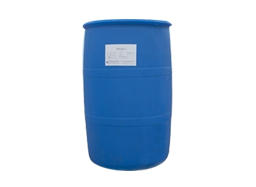Alkyl polyglucoside (APG) is a mild surfactant developed in the world since 1990s. These surfactants can be synthesized from renewable plant resources. They not only have broad-spectrum antibacterial activity, but also have the advantages of rapid and complete biodegradation and no pollution to the environment. The effects of APG surfactants on the growth and killing of red tide organisms were discussed in order to lay a foundation for the development of the application of APG surfactants in the control of harmful red tide.

Effects of APG on the growth of Prorocentrum dentatum 0201-01 and red tide alien Bay algae. It can be seen from the figure that in the whole experimental process, different concentrations of APG showed significant inhibition on the growth of two red tide organisms, and the effect became more and more obvious with the increase of concentration. When the concentration of APG was 2.5 ~ 6.5 mg · L-1, the growth of Prorocentrum dentatum was significantly inhibited. When its concentration increased to 8.5 mg · L-1, the cell density of Prorocentrum dentatum decreased rapidly and basically stopped growing (see Fig. 1a). For red tide heterobay algae, under the action of 7.5 ~ 12.5 mg · L-1 APG, the growth of algal cells first showed a dull reaction, that is, the density of algal cells decreased within 24 hours after adding APG, and then the algal cells began to grow.
The inhibitory and killing effects of alkyl glycosides on algal cells with different initial densities were studied by using red tide organisms Prorocentrum dentatum 0201.01 and Heterosigma akashiwo. The results show that alkyl glycosides can significantly inhibit the growth of the two red tide organisms in a certain concentration range. Further increasing the dosage of alkyl glycosides can make algal cells lose motility, break and even dissolve. It can be seen that alkyl glycosides have a certain application prospect in red tide control.
It is one of the methods of red tide control to use chemical algaecides to inhibit and kill red tide organisms. At present, a variety of chemical agents have been used in the experimental research of red tide biological control: copper sulfate and slow-release copper ion algaecides, clay and modified clay, ozone, chlorine dioxide, and organic algaecides such as Bromogeramine, iodophor and isothiazolinone. Recently, it has been reported that quaternary ammonium surfactants and savantine biosurfactants are used in the biological treatment of red tide.